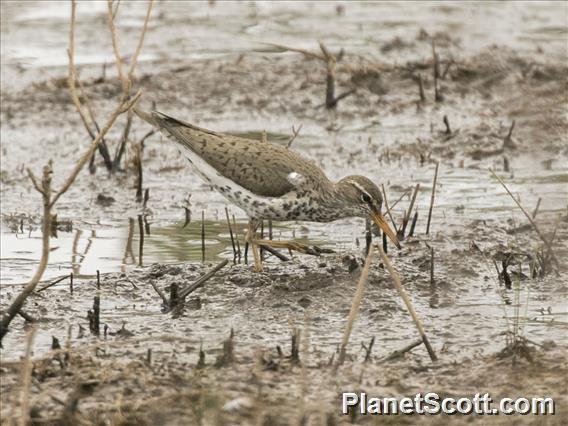Spotted Sandpiper (Actitis macularius)

Spotted Sandpiper (Actitis macularius)
×


Spotted Sandpiper (Actitis macularius)
About Spotted Sandpiper (Actitis macularius)
- Kingdom: Animals
- Phylum: Chordates
- Class: Birds
- Order: Pelicans
- Family: Sandpipers and Allies
The spotted sandpiper is a small shorebird. Together with its sister species the common sandpiper, it makes up the genus Actitis. They replace each other geographically; stray birds may settle down with breeders of the other species and hybridize.
Source: Wikipedia
Trips
Visits
-
2001-05-01
Candlestick Park, United States of America -
2006-03-04
Candlestick Park, United States of America -
2006-04-19
Candlestick Park, United States of America -
-
2006-11-11
Sani Lodge, Ecuador -
2006-12-19
Puerto Quito, Ecuador -
2006-12-22
Mindo - Foothills, Ecuador -
2007-01-01
Candlestick Park, United States of America -
2007-10-10
La Mancha, Mexico -
2008-01-04
Puerto Vallarta, Mexico -
2008-01-26
Agua Vista Park, United States of America -
2008-02-17
San Jose del Cabo - Estuary, Mexico -
2009-01-14
Cozumel, Mexico -
2009-01-18
Lamanai Ruins River Trip, Belize -
2009-01-24
Bullet Tree Falls, Belize -
2009-02-07
Parque National Iztopo, Honduras -
2009-02-07
Tela, Honduras -
2009-02-12
Corn Islands, Nicaragua -
2009-02-24
Puerto Jiminez, Costa Rica -
2009-02-24
Corcovado National Park - Los Patos, Costa Rica -
2009-02-25
Corcovado National Park - La Sirena, Costa Rica -
2009-03-02
Isla Boca Brava, Panama -
2009-03-15
Boca de Cupe, Panama -
2009-03-18
Mogue, Panama -
2009-11-29
Heron's Head Park, United States of America -
2010-05-27
Kenai Peninsula, United States of America -
-
2011-07-10
Santa Fe River, United States of America -
2012-04-14
Heron's Head Park, United States of America -
2012-05-20
Pyramid Lake, United States of America -
2012-07-12
Yellowstone National Park, United States of America -
2012-08-12
Coyote Point County Park--harbor and marsh, United States of America -
2012-09-23
Heron's Head Park, United States of America -
2012-12-13
Heron's Head Park, United States of America -
2013-03-23
Coyote Point County Park--harbor and marsh, United States of America -
2013-04-16
Aransas NWR (CTC 037) (Aransas Co.), United States of America -
2013-07-02
Yolla Bolla Wilderness, United States of America -
2013-08-05
Heron's Head Park, United States of America -
2013-12-01
Heron's Head Park, United States of America -
2014-01-01
Heron's Head Park, United States of America -
2014-01-11
Heron's Head Park, United States of America -
2014-01-14
Candlestick Park, United States of America -
2014-01-26
Los Haitises National Park, Dominican Republic -
2014-03-04
Chabot Regional Park, United States of America -
2014-07-18
Nome-Kougarok Road, United States of America -
2015-01-01
Candlestick Park, United States of America -
-
-
-
-
-
-
-
-
-
-
-
-
-
-
-
-
-
-
-
-
-
-
-
-
-
-
-
-
-
-
-
-
-
-
-
-
-
-
-
-
-
-
-
-






